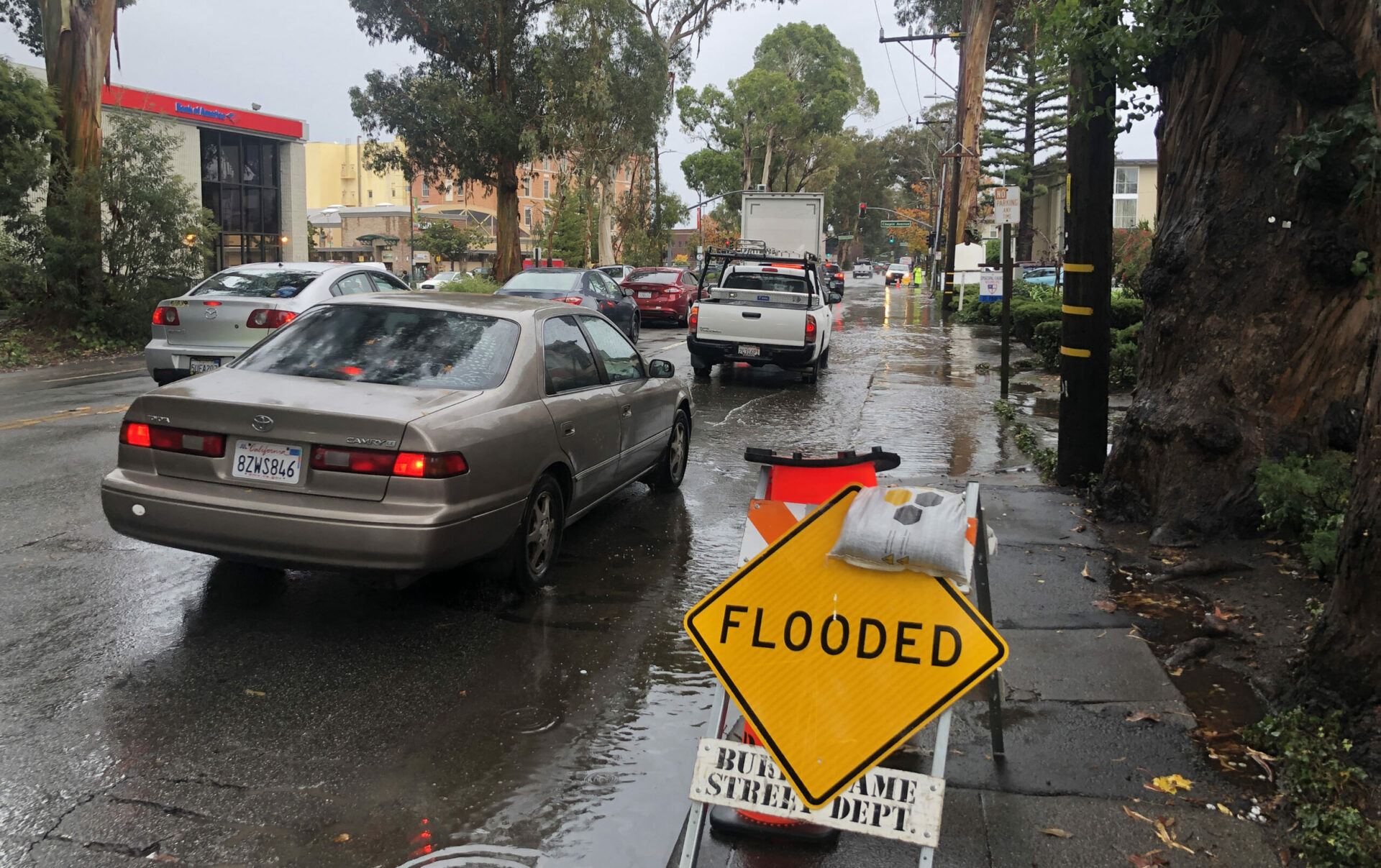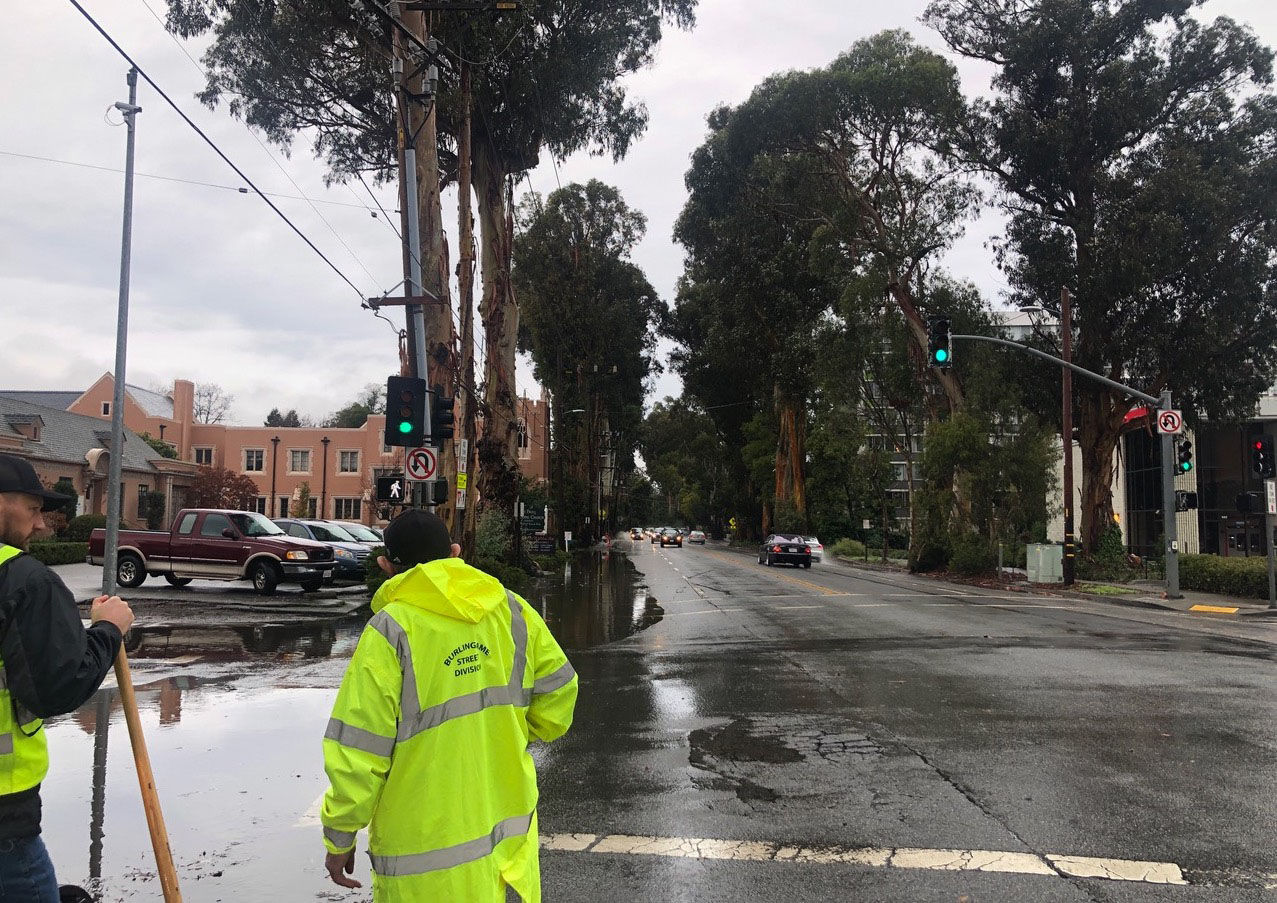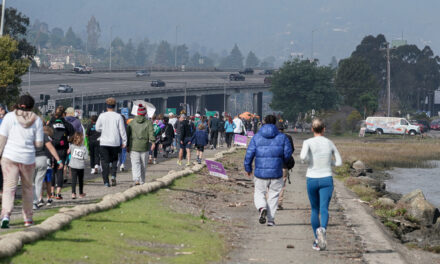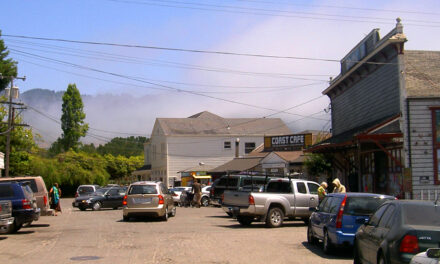A Fix for Old Drains, Old Trees with New Rainfall
Photo: Cariad Hayes Thronson
Navigating El Camino Real (State Route 92) through the city of Burlingame has been challenging — and sometimes nerve-wracking — for drivers and pedestrians alike for decades. The pavement is uneven and heavily cracked, and the massive eucalyptus trees that line the four-lane highway crowd the road, impeding sightlines and occasionally shedding branches, while their root systems buckle the narrow sidewalks. Flooding occurs during virtually every storm, thanks to an ancient drainage system and uneven pavement. Now, a CalTrans project to rehabilitate 3.6 miles of El Camino promises to remedy many of these issues, improving safety and climate resilience.
The El Camino Real Roadway Renewal Project will completely replace the pavement, including underground structures, between Millbrae and San Mateo, and upgrade sidewalks to comply with the Americans with Disabilities Act.
Although climate resilience was not a driver of the project, “the recent flooding due to atmospheric rivers re-emphasized the purpose and need for it,” according to CalTrans spokesperson Alejandro Lopez. CalTrans will install 34 new drainage inlets, modify or relocate an additional 25, and replace old drainage pipes.
The project will require the removal of up to half of the 700 trees, mostly eucalyptus and elms, within the project limits. Several eucalyptus and one elm toppled during the 2022-23 storms, and many of the trees are deemed too old or unhealthy to withstand construction-related disruption to their root systems; others need to be removed to improve sightlines or make way for sidewalk improvements.
Crews tackle flooding and debris in the project zone in Burlingame. Photo: Cariad Hayes Thronson
Approximately 250 of the trees that will be removed are part of the Howard Ralston Eucalyptus Tree Rows, which are listed in the National Register of Historic Places. According to Jennifer Pfaff of the Burlingame Historical Society, the trees will need to be replaced with different species with narrower trunks. They will also be vetted for their ability to withstand drought and atmospheric rivers. “We need to convey the period of time when the original trees were planted,” she says. “The goal is a safer roadway and sidewalk while retaining the history and character of the tree rows.”
Other Recent Posts
Assistant Editor Job Announcement
Part time freelance job opening with Bay Area climate resilience magazine.
Training 18 New Community Leaders in a Resilience Hot Spot
A June 7 event minted 18 new community leaders now better-equipped to care for Suisun City and Fairfield through pollution, heat, smoke, and high water.
Mayor Pushes Suisun City To Do Better
Mayor Alma Hernandez has devoted herself to preparing her community for a warming world.
The Path to a Just Transition for Benicia’s Refinery Workers
As Valero prepares to shutter its Benicia oil refinery, 400 jobs hang in the balance. Can California ensure a just transition for fossil fuel workers?
Ecologist Finds Art in Restoring Levees
In Sacramento, an artist-ecologist brings California’s native species to life – through art, and through fish-friendly levee restoration.
New Metrics on Hybrid Gray-Green Levees
UC Santa Cruz research project investigates how horizontal “living levees” can cut flood risk.
Community Editor Job Announcement
Part time freelance job opening with Bay Area climate resilience magazine.
Being Bike-Friendly is Gateway to Climate Advocacy
Four Bay Area cyclists push for better city infrastructure.
Can Colgan Creek Do It All? Santa Rosa Reimagines Flood Control
A restoration project blends old-school flood control with modern green infrastructure. Is this how California can manage runoff from future megastorms?
San Francisco Youth Explore Flood Risk on Home Turf
At the Shoreline Leadership Academy, high school students learn about sea level rise through hands-on tours and community projects.











